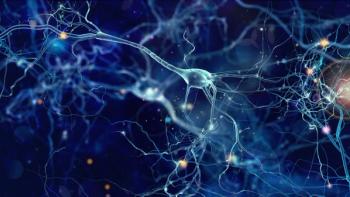
Insights From the 2025 APA Annual Meeting
Key Takeaways
- Lifestyle psychiatry was emphasized as crucial for integrating physical and mental health, enhancing patient outcomes.
- Plasma levels of antipsychotics can optimize treatment decisions, with future potential for rapid turnaround times.
Discover key insights from the APA Annual Meeting, highlighting advancements in lifestyle psychiatry, ADHD treatment, and innovative suicide prevention models.
CONFERENCE REPORTER
This year's American Psychiatric Association (APA) Annual Meeting passed by in a blur. Just in case you missed any conference coverage, here is a recap of the top insights we learned from leaders in the field of psychiatry.
At this year's meeting...
Lifestyle Psychiatry as a Theme: Insights from the APA President
Ramaswamy Viswanathan, MD, DrMedSc, the outgoing President of the APA, shared how he chose the theme of lifestyle psychiatry for this year's meeting, the most rewarding aspects of his presidency, and how lifestyle psychiatry improve outcomes.
"I do believe that all physicians should be interested in both the physical health and mental health—the totality of the person. They are not simply absence of disease," said Viswanathan.
Read the full interview
Talking With Titans
In a brand new series, "Talking With Titans," Psychiatric Times Editor in Chief, John J. Miller, MD, interviewed titans in the field of psychopharmacology live at this year's meeting.
In his 1st video, Jonathan M. Meyer, MD, DFAPA, discussed the underutilization of plasma levels of antipsychotics in current practice.
Levels can tell a clinician 3 things about a patient: (1) Is the patient taking their antipsychotic? (2) Is the level high enough that it is time to change to a different antipsychotic? (3) Does this patient metabolize things differently?
The turnaround for plasma levels can be slow, as long as 1-2 weeks, Meyer notes. The future, however, could include plasma level turnaround times of merely hours. Quick turnaround times became especially important during the COVID-19 pandemic, as clozapine levels would go up due to acute inflammation during infection. If a patient is not responding as expected when taking antipsychotics, Meyer immediately suggests taking a level.
"Patients with schizophrenia are among the most ill that many of us will ever see. Why would we not want all the information we can gather to make the best decision to help this person?"
Watch the entire interview
In his 2nd video, Meyer elaborates on lithium, one of the strongest tools in psychiatry, and expanding our understanding of its mechanisms. How can we develop antidepressant drugs to enhance benefits and minimize adverse events? The known molecular targets of lithium are surprisingly few and include the signaling kinase glycogen synthase kinase-3 beta (GSK-3β).1
"We now know what the downstream process is, which is being regulated by GSK-3β inhibition. With that insight, people are now trying to find specific and potent GSK-3β inhibitors, which we think will give all of lithium's activities, as best we understand it."
Watch the entire interview
Jeffrey Newcorn, MD, shared his expertise on differences in treatment of ADHD in adults vs children.
"Now, more people are coming for treatment as adults than children. There are important differences in the people who first present later in life."
Approximately 15.5 million US adults (6.0%) have a current ADHD diagnosis based on self-report.
Watch the entire interview
John H. Krystal, MD, best known for leading the discovery of ketamine's rapid antidepressant effects, shared his latest insights on NMDA glutamate receptors and ketamine.
"One of the things that the work with ketamine has done is to broaden our ideas about the biology of depression, and include in our thinking the biology of the cerebral cortex and the limbic system. Once you do that, you realize that the main excitatory transmitter in the cerebral cortex—the information highway of the higher centers of our brain—is glutamate."
In his research, Krystal has found 3 different kinds of glutamate synaptic abnormalities: (1) loss of glutamate synapses, (2) reduced effectiveness of glutamate synapses, and (3) and abnormalities in glutamate homeostasis. All 3 have something to say about why ketamine is a rapidly acting antidepressant.
Watch the entire interview
Roger McIntyre, MD, FRCPC, has spent several decades dedicated to understanding the impact of insulin and metabolism on the brain, and shared some of his wisdom at the APA Annual Meeting.
"What I discovered was insulin plays a critical role in mood regulation and cognition. And I thought, why don't we study this as a treatment for depression or bipolar disorder? That ignited 25-30 years of curiosity in pursuit of this question."
McIntyre explained the effect of insulin in the brain for patients with diabetes. For example, as type II diabetes progresses, and people have decreased insulin production over time, it leads to lessened availability of insulin to the brain for trophic and plasticity support. In the early days of type II diabetes, the brain is exposed to hyperinsulinemia. That results in a deposition of a variety of molecules that trigger inflammatory cascades. Over the longer term, there is a relative deficiency or pulling back of trophic support.
"Insulin the key role in plasticity and trophic support at the cellular level, which is the component that is regulating some of the circuit connectivity, like forming synapses, synaptic strength, synaptic connectivity," said McIntyre.
Watch the entire interview
A New Model of Suicide Prevention
Igor Galynker, MD, PhD, sought to understand the shortcomings of our current approach to suicide, how to effectively prevent suicide, and how to recognize the suicidal mental state. To map the transition from chronic to imminent suicidal risk, Galynker et al developed a novel, stepwise model of this transition, termed the Narrative-Crisis Model.
Galynker presented in Los Angeles with a panel of 4 fathers, all of whom lost children to suicide. Oliver Lignell, PMP, ARM; Lorence Miller, PhD; Frederick Miller, MD; and Rob Masinter spoke about their young adult children and their suicides, sharing their children's mental states in the time preceding their suicides, and how denial of suicidal ideation led to a false sense of security for their families.
"I am here with these incredibly courageous fathers," said Galynker. "We have researched and created the model of suicidal behavior which does not rely on people telling you they are suicidal, because they can't in that state."
You can learn more about their stories
Stay Up to Date
Be sure to follow us on
If there is a conference you think we should cover, or want to share your data from a recent conference, let us know at
Newsletter
Receive trusted psychiatric news, expert analysis, and clinical insights — subscribe today to support your practice and your patients.











